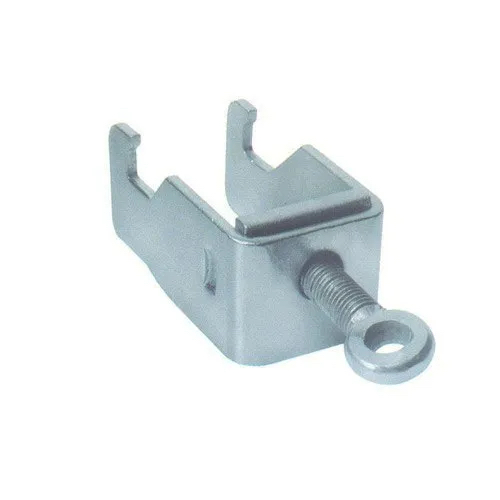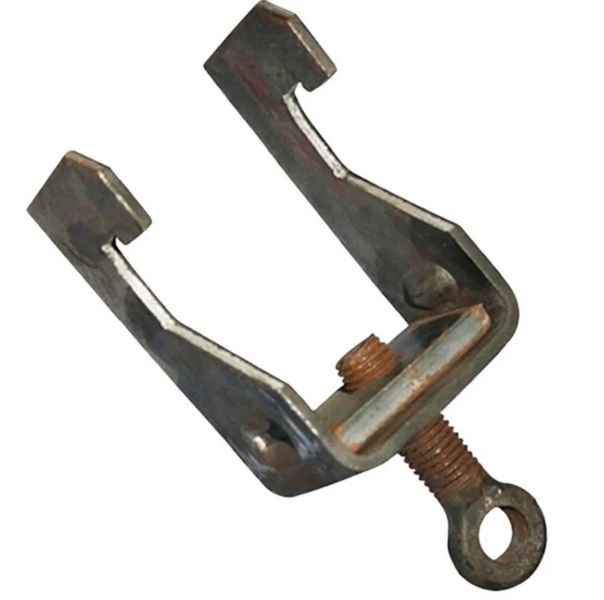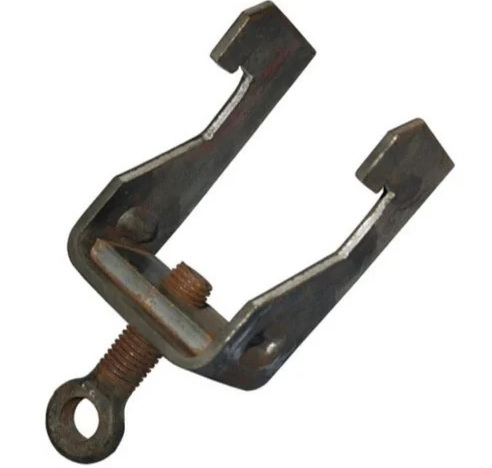Content Menu
● What is a C Clamp?
● Applications of C Clamps in Scaffolding
● Factors to Consider When Choosing a C Clamp for Scaffolding
>> Size and Opening Capacity
>> Material and Durability
>> Load Capacity and Safety Standards
>> Clamp Type and Design
>> Thread and Screw Quality
● Types of C Clamps Used in Scaffolding
● How to Measure for a C Clamp
● Best Practices for Using C Clamps in Scaffolding
>> Proper Installation Techniques
>> Regular Inspection and Maintenance
>> Safety Guidelines
● Common Mistakes to Avoid
● Conclusion
● FAQ
>> 1. What is the standard size range for C clamps used in scaffolding?
>> 2. How do I measure the correct size C clamp for my scaffolding project?
>> 3. What material should C clamps be made of for scaffolding applications?
>> 4. How often should C clamps be inspected for damage or wear?
>> 5. What safety precautions should I take when using C clamps in scaffolding?
● Citations:
C clamps are essential tools in scaffolding, used to secure components and ensure the stability of the structure. Selecting the right size C clamp is crucial for safety and efficiency. This article explores the factors influencing the choice of C clamps for scaffolding, including size, material, load capacity, and best practices. Proper selection of "scaffolding c clamp" size ensures structural integrity and worker safety on the job site.

What is a C Clamp?
A C clamp, also known as a G clamp, is a type of clamping device shaped like the letter "C". It consists of a frame, typically made of steel or cast iron, and a screw mechanism that applies pressure to hold two or more objects together. In scaffolding, C clamps are used to connect tubes, secure ledgers, and attach various components to the main structure. The size of a C clamp refers to its opening capacity, which is the maximum distance between the jaws of the clamp. Different sizes are available to accommodate various scaffolding configurations and load requirements. Using the right "scaffolding c clamp" ensures a secure and stable connection.
Applications of C Clamps in Scaffolding
C clamps are versatile tools with several applications in scaffolding:
- Connecting Tubes: Securing vertical and horizontal tubes to create a rigid frame.
- Attaching Ledgers: Fastening horizontal ledgers to vertical standards to support platforms.
- Securing Braces: Connecting diagonal braces to enhance stability and prevent swaying.
- Supporting Platforms: Providing additional support for planks and platforms to increase load capacity.
- Fixing Accessories: Attaching accessories such as ladders, guardrails, and toe boards to the scaffolding structure.
These applications highlight the importance of C clamps in ensuring the structural integrity of scaffolding systems. The correct size and type of "scaffolding c clamp" are essential for each application to maintain safety and stability.
Factors to Consider When Choosing a C Clamp for Scaffolding
Size and Opening Capacity
The size of a C clamp is determined by its opening capacity, which should be sufficient to accommodate the components being joined. Measure the outer diameter of the tubes and the thickness of any additional materials to determine the minimum opening capacity required. Common sizes for scaffolding C clamps range from 2 inches to 8 inches, but larger sizes may be necessary for specialized applications. Selecting the correct opening capacity is crucial for ensuring a secure and stable connection.
Material and Durability
C clamps used in scaffolding should be made from high-strength materials such as steel or malleable iron to withstand the rigors of construction environments. Steel clamps offer excellent strength and durability, while malleable iron clamps provide good impact resistance. Choose clamps with a corrosion-resistant finish, such as zinc plating or powder coating, to protect against rust and environmental damage. The material and construction of the "scaffolding c clamp" affect its lifespan and reliability.
Load Capacity and Safety Standards
The load capacity of a C clamp is the maximum force it can safely withstand without failing. Ensure that the C clamp has a load capacity that exceeds the expected load on the scaffolding structure. Check for compliance with relevant safety standards and certifications, such as OSHA regulations and ANSI standards, to ensure the clamp meets industry requirements. The "scaffolding c clamp" must have adequate load capacity to maintain the structural integrity of the scaffold.
Clamp Type and Design
Different types of C clamps are available, each designed for specific applications. Standard C clamps are suitable for general-purpose use, while heavy-duty C clamps offer increased strength and clamping force. Swivel C clamps feature a rotating pad that allows for angled clamping, while quick-release C clamps provide rapid tightening and loosening. Choose the clamp type that best suits the specific requirements of your scaffolding project. The clamp design can influence the ease of use and effectiveness of the "scaffolding c clamp".
Thread and Screw Quality
The thread and screw mechanism of a C clamp are critical for applying and maintaining clamping force. Choose clamps with a high-quality thread that is smooth and easy to turn. Inspect the screw for signs of wear or damage, and ensure that it engages fully with the frame. Lubricate the screw regularly to prevent corrosion and ensure smooth operation. High-quality threads and screws enhance the durability and performance of the "scaffolding c clamp".

Types of C Clamps Used in Scaffolding
1. Standard C Clamps: Suitable for general-purpose scaffolding applications.
2. Heavy-Duty C Clamps: Designed for increased strength and clamping force.
3. Swivel C Clamps: Feature a rotating pad for angled clamping.
4. Quick-Release C Clamps: Provide rapid tightening and loosening.
5. Locking C Clamps: Offer secure and permanent connections.
Each type of "scaffolding c clamp" is designed for specific applications, so choosing the right type is essential. Standard C clamps are versatile and suitable for most scaffolding tasks. Heavy-duty C clamps provide additional strength for demanding applications. Swivel C clamps are useful for angled connections, while quick-release C clamps save time on projects requiring frequent adjustments.
How to Measure for a C Clamp
1. Measure Tube Diameter: Use a caliper or measuring tape to determine the outer diameter of the scaffolding tubes.
2. Account for Overlap: Add the thickness of any overlapping materials, such as planks or boards.
3. Add Clearance: Include a small amount of clearance to ensure the clamp can be easily installed and tightened.
4. Determine Minimum Opening: The sum of these measurements is the minimum opening capacity required for the C clamp.
Accurate measurements are crucial for selecting the correct size of "scaffolding c clamp". Precise measurement ensures the clamp fits properly and provides a secure connection.
Best Practices for Using C Clamps in Scaffolding
Proper Installation Techniques
- Align the components to be joined and position the C clamp over the connection point.
- Tighten the screw gradually, ensuring that the clamp is evenly seated and securely fastened.
- Avoid over-tightening, which can damage the clamp or the scaffolding components.
- Use a wrench or socket to apply additional torque if necessary, but be careful not to exceed the clamp's load capacity.
Regular Inspection and Maintenance
- Inspect C clamps regularly for signs of wear, damage, or corrosion.
- Check the screw for smooth operation and lubricate as needed.
- Replace any clamps that are cracked, deformed, or otherwise compromised.
- Store C clamps in a dry place to prevent rust and corrosion.
Safety Guidelines
- Always wear appropriate personal protective equipment (PPE), such as gloves and eye protection, when working with C clamps.
- Follow all safety guidelines and regulations for scaffolding construction and maintenance.
- Never exceed the load capacity of the C clamp.
- Do not use damaged or improperly installed C clamps.
Following best practices and safety guidelines is essential for preventing accidents and ensuring the stability of scaffolding structures. Regular inspection and maintenance of "scaffolding c clamp" ensures they perform as intended.
Common Mistakes to Avoid
- Using the Wrong Size: Selecting a C clamp that is too small or too large can compromise the connection.
- Over-Tightening: Applying excessive force can damage the clamp or the scaffolding components.
- Neglecting Maintenance: Failing to inspect and maintain C clamps can lead to premature failure.
- Ignoring Load Capacity: Exceeding the load capacity of the C clamp can result in structural collapse.
- Improper Installation: Incorrectly installing the clamp can reduce its effectiveness and increase the risk of accidents.
Avoiding these common mistakes is crucial for maintaining the safety and stability of scaffolding structures. Proper selection and use of "scaffolding c clamp" can minimize the risk of accidents.
Conclusion
Selecting the right size C clamp for scaffolding is essential for ensuring structural integrity and worker safety. Consider the size and opening capacity, material and durability, load capacity, clamp type, and thread quality when choosing a C clamp. Follow best practices for installation, inspection, and maintenance to maximize the lifespan and effectiveness of the clamps. By choosing the correct "scaffolding c clamp" and adhering to safety guidelines, you can create a safe and stable working environment on the construction site.

FAQ
1. What is the standard size range for C clamps used in scaffolding?
Common sizes for scaffolding C clamps range from 2 inches to 8 inches, but larger sizes may be necessary for specialized applications.
2. How do I measure the correct size C clamp for my scaffolding project?
Measure the outer diameter of the tubes and add the thickness of any overlapping materials. Include a small amount of clearance to ensure easy installation.
3. What material should C clamps be made of for scaffolding applications?
C clamps should be made from high-strength materials such as steel or malleable iron, with a corrosion-resistant finish.
4. How often should C clamps be inspected for damage or wear?
C clamps should be inspected regularly for signs of wear, damage, or corrosion, and replaced if necessary.
5. What safety precautions should I take when using C clamps in scaffolding?
Always wear appropriate PPE, follow safety guidelines, never exceed the load capacity, and do not use damaged or improperly installed clamps.
Citations:
[1] https://www.tp-scaffold.com/what-size-c-clamp-do-i-need-for-scaffolding.html
[2] https://koueitrading.com/global/product/bullman-type-c-clamp/
[3] https://www.wm-scaffold.com/fixed-clamp/
[4] https://scaffoldexpress.com/products/2-shoring-c-clamp
[5] https://www.wm-scaffold.com/scaffolding-coupler.html
[6] https://cuiclamps.com/scaffold-clamps.html
[7] https://www.tradeindia.com/products/scaffolding-c-clamp-c821469.html






















